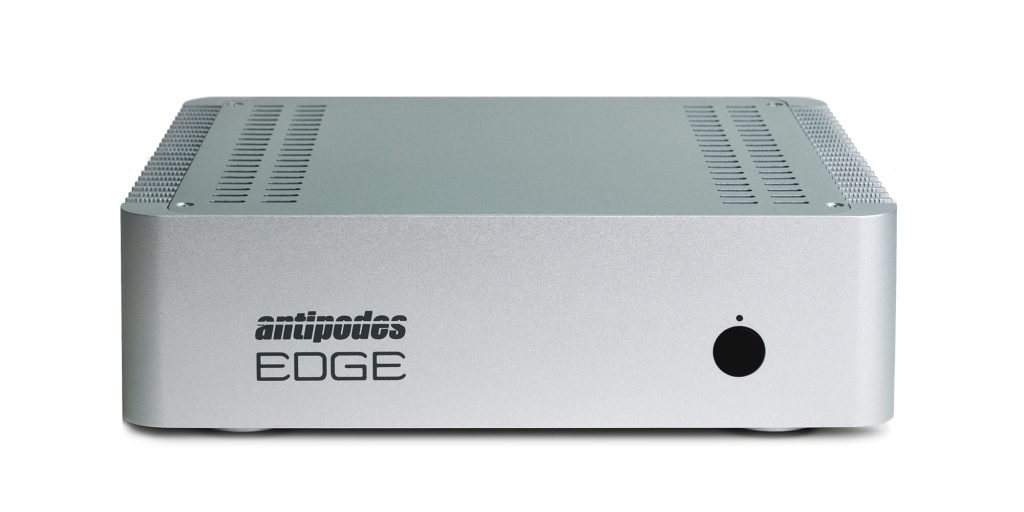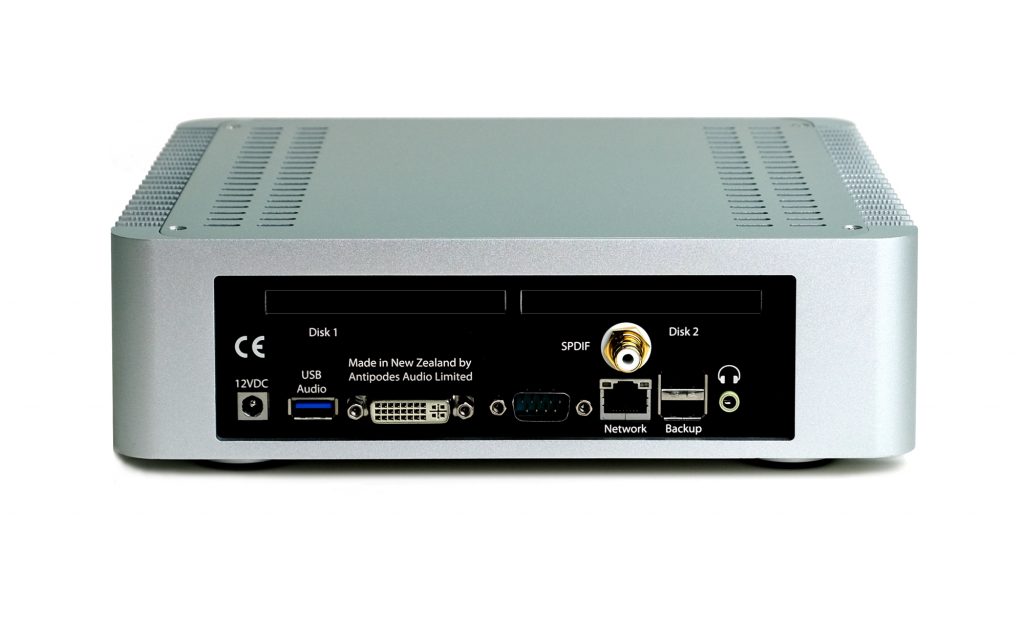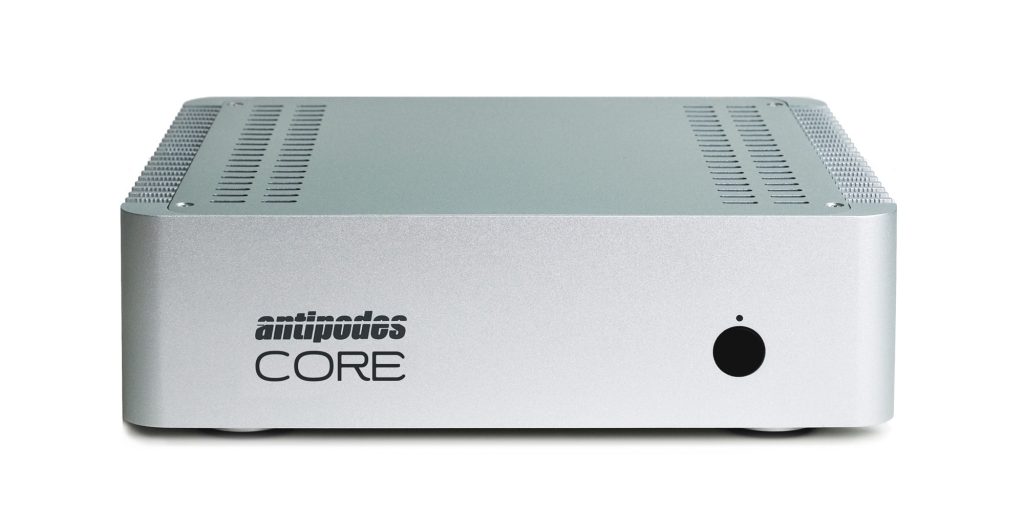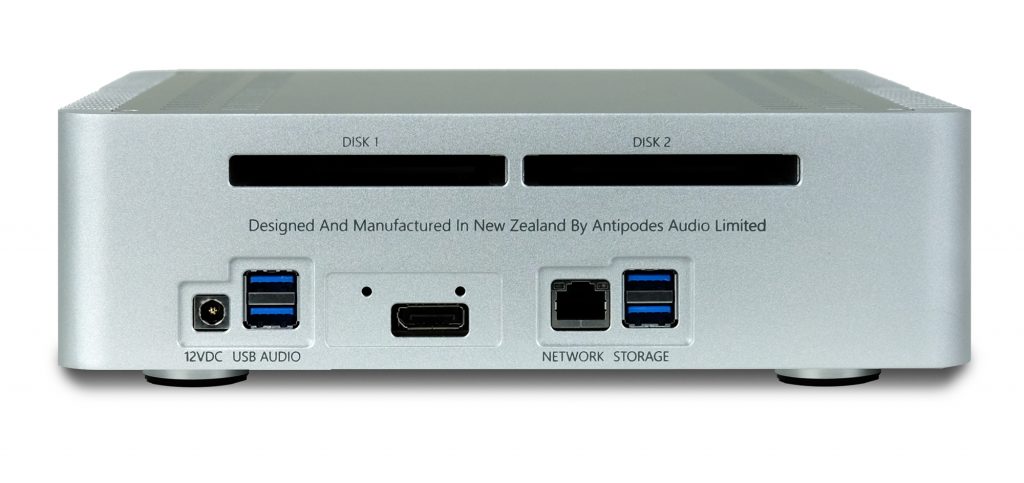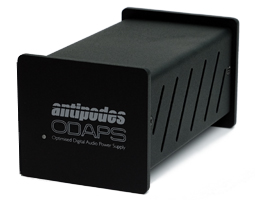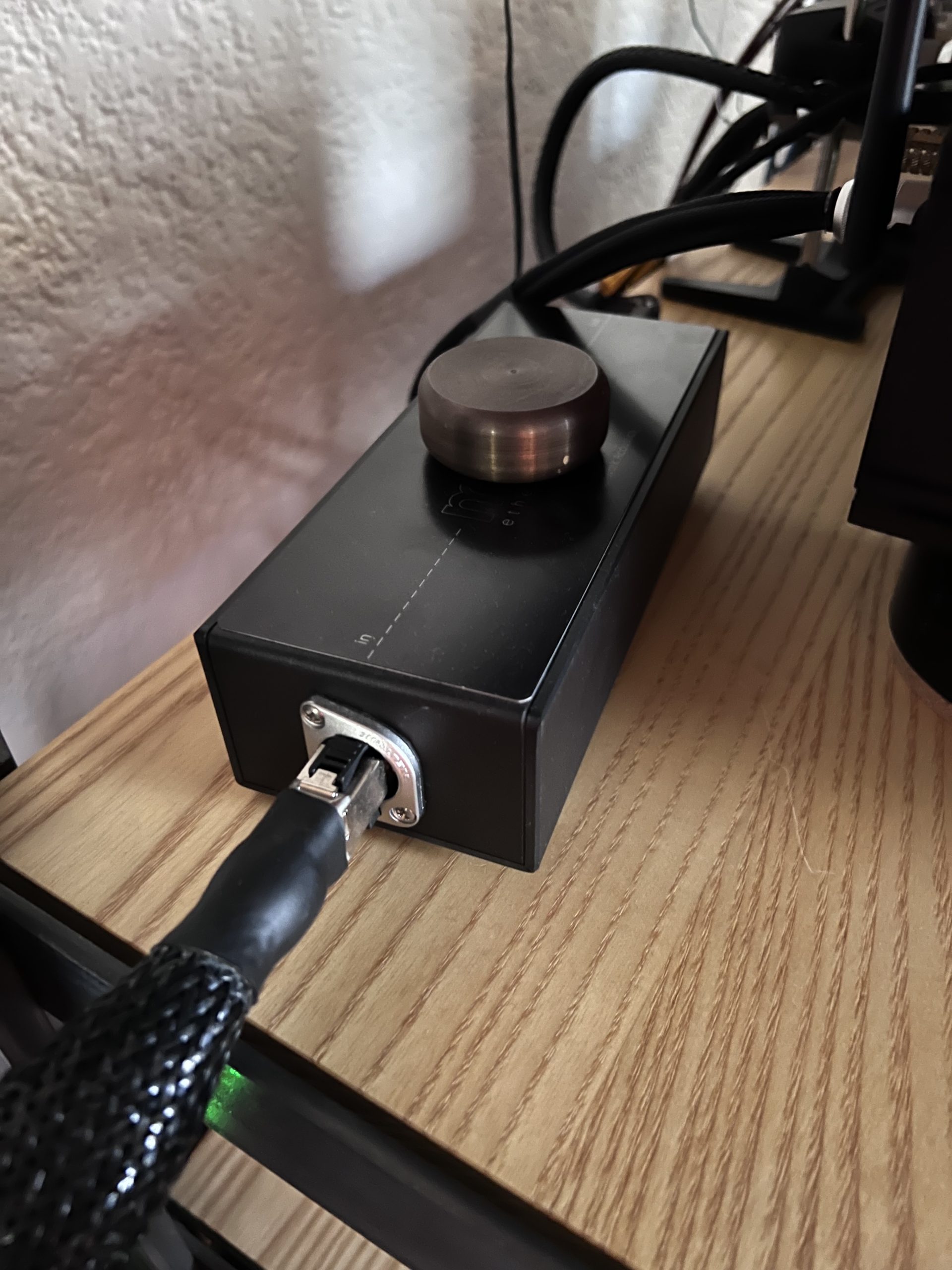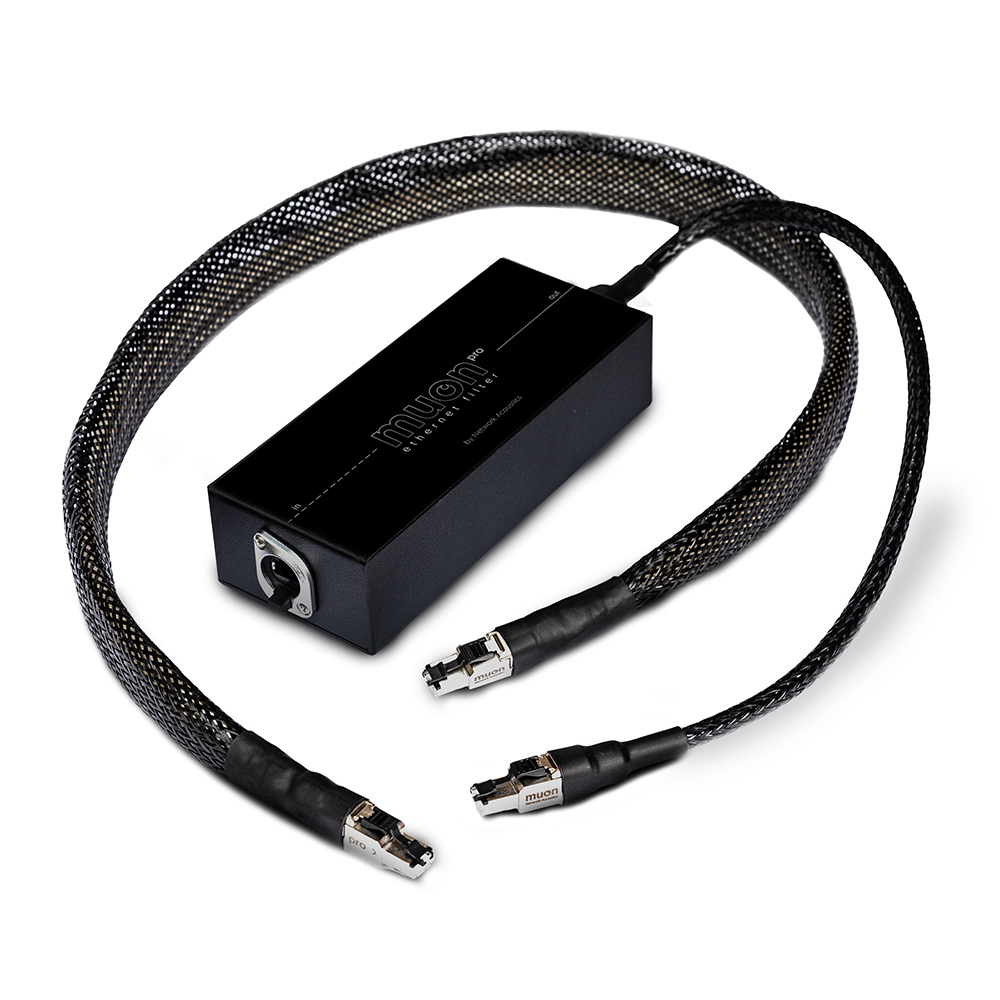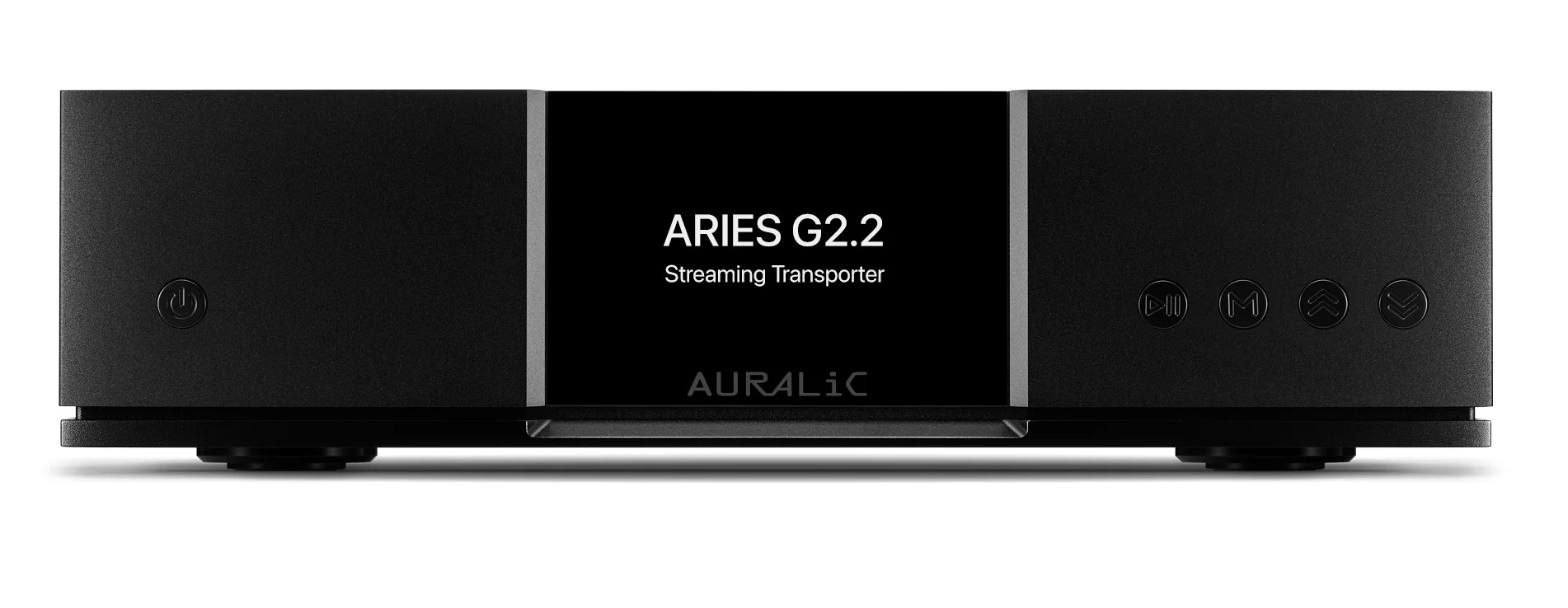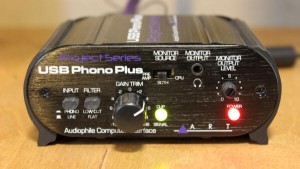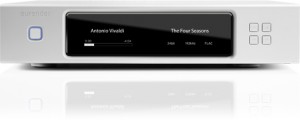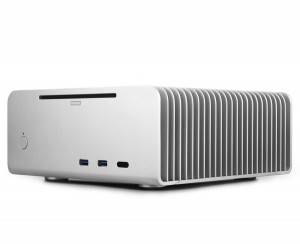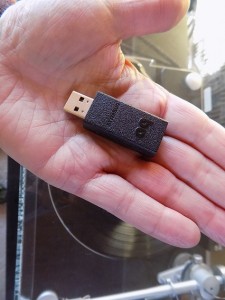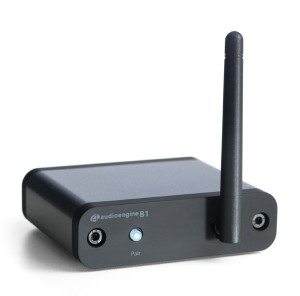So it is now 2017, and many of us music lovers and gear nuts have moved into the area of playing back our music files (streamed or downloaded from the internet or ripped from a CD) in some fashion. The world of computer-based audio has evolved from using an off-the-shelf PC or Mac to do this, to a tweaked PC or Mac—and in either case via software written for just this purpose as opposed to that which is free (iTunes or Windows Media vs say that from JRiver, Audirvana, Amarra, etc.)—to purpose built streamers/renderers from say AURALiC, Antipodes, Aurender, SoTM, and so on. For sure these purpose-built streamers/renderers are really nothing more than a computer, but in this case, they are built to only do one thing and nothing else: get your files from A to B with as little impact as possible.
Options with this include not only the processing speed, but memory, output options (USB, AES, S/PDIF), internal storage, power supply, networked via Wi-Fi or Ethernet, and of course playback software.
A good number use their own propriety software (AURALiC with their Lighting DS, or Aurender with their Conductor for example) and others rely on third party options such as Roon, MPD, HQ Player, and so on. Of course, going to third party software can in some cases require the use of an external PC or Mac running in the background or not—all depends on how the streamer/renderer is built. Ones that come with an internal HD are good to go (like the Antipodes units here) but others such as those from SoTM require the PC/Mac to handle that end (no HD).
All of which opens up one big can of worms. What exactly are we listening to? I mean, there are so many possible combinations and variables that can affect the sound… from the processor, to the power supply, to the software used (theirs or someone else's), to the connection (Ethernet vs. wireless), to where the music is stored (external NAS or internal HD—oh, and whether the HD is spinning or solid-state), to even how one ripped or sourced the files… and to even the file type and its sampling/bit rate, Ethernet cables, choices in what switches for the Ethernet/connection and their power supplies… my head spins.
Toss in USB cables, NAS options, Ethernet configurations… yeah, this is not so simple.
Not really apples to apples… in too many cases it is more like apples to bananas. Or since the Antipodes is from New Zealand... apples to kiwis.
But wait… let me digress here as many will be thinking that units from Antipodes, AURALiC, Aurender and so on are, as I have said, just a computer and so why the high price? And you say… WTF! $$$ for a little box?! Okay, agreed. You can buy, say a Nuc for under $1k, but think of the EDGE or whatever as a specialized computer… think of it as a race car. Yeah, you can go out and buy a Dodge Charger Daytona with a Hemi for like $40k. But it is not a race car… though it goes really fast from A to B. It comes with all the bells and whistles that a race car really does not need and actually, for a race car, will all get in the way, but for driving around town these things are nice to have. You spend countless hours removing all these things to get it to go faster… but in the end, all you are doing is simply modifying a stock car into something… not so stock. There will be a point where you can only modify it so much. And this takes time and if you wanted to sell it… well that time is worth something to you. So, it costs more. You could say screw that, I will take that a Hemi and build something to just do exactly what I want—so I will start from scratch and make a purpose-built race car… time, specific parts, skills and knowledge, and so on… and limited numbers being produced as well. No assembly line to keep costs down. No mass parts sourcing… and so now the costs go way up. You got what you wanted… a race car that is built to do one thing… go really fast from A to B with nothing else getting in the way. No useless options, parts, features… etc. Same with the EDGE and CORE… ditto AURALiC, Aurender, and so on. Each done with a different eye or philosophy of what is needed or wanted… each their own. But you will pay for it.
So, yeah, I have reviewed units from AURALiC and Aurender… as well as the Antipodes DX. The focus here in on two new products from Antipodes; the CORE (from $4350 based on SD drives options—think race car) and EDGE (from $3100 based on SD drives options—again think race car). Both are renderers, that is they render your files and then 'stream' or send them to whatever your DAC is via, well it depends on the CORE or EDGE as they are quite the same and yet… different… but here, from the Antipodes website:
The EDGE uses our V3.5L Celeron circuit and can run nearly all features in demanding Server apps like Roon Server. But some processing features in Roon will not be able to be used, such as transcoding/upsampling to high DSD rates. The CORE is an alternative to the EDGE that provides high processing power. The Antipodes CORE is built around a very powerful computing engine, for demanding server apps like Roon and for fast response with very large music libraries. You can think of the CORE as a high-power version of the EDGE, delivering similar sound quality, but with much higher processing power.
The EDGE
- Medium Power V3.5L Circuit
- Fanless All Alloy
- External Level 1 ODAPS Linear Power Supply
- SPDIF to 24/192 PCM
- USB Audio 2.0 Output
- PCM to 32bit / 768kHz PCM
- DoP to DSD512, Native DSD to DSD512
The CORE
- High Power V4H Circuit
- Fanless All Alloy
- External Level 1 ODAPS Linear Power Supply
- USB Audio 2.0 Output
- PCM to 32bit / 768kHz PCM
- DoP to DSD512, Native DSD to DSD512
Music Playback Options (either)
- Roon Server & Roon Ready
- SqueezeBox & Squeezelite
- MPD
- DLNA/UPnP/OpenHome
- HQPlayer NAA
- Shairport (Apple Airport Emulation)
- SONOS Integration
- Plex Media Server
So, it appears that the differences between the two are primarily their output options (EDGE offers pretty much everything while the CORE is USB only) and processing speed (CORE is considerably faster than the EDGE though I am thinking that the board and whatnot in either are reflective of this difference as well). And both offer the same software options, though with limitations with Roon based on the EDGE's less robust processor. Oh, and each comes with its own outboard linear power supply... of which I wish it had feet!
But here is the thing, one can use either EDGE or the CORE, or both combined to play back one's files… and with that, I felt I needed to ask Mark Jenkins at Antipodes a few questions to help clarify for you, and myself, what he was thinking with these units…
What were your goals in the design of the EDGE and CORE? As separates and when used together?
Many of our customers buy our entry level product and then wish to upgrade. The idea of the CORE and EDGE is to provide an upgrade path that does not mean having to send it off for an upgrade or trade it in for a higher level one. So, a customer might buy an EDGE and play from external storage or even use it as just a renderer with say Roon being on an existing computer. Later, add SSDs to the EDGE for better sound and play independently. Later add a CORE and swap the SSDs to the CORE. Or alternatively they may start with a CORE to play to an Ethernet DAC, swap to a USB DAC for better sound or just an upgrade, and then maybe add an EDGE later. In this way you can start with a $3k investment and progress to the top-flight CORE + EDGE combo over time. The purchase of both a CORE and an EDGE up-front is too large a step for some people. This is why they are both designed to be used standalone and as part of a combo. Most of our customers have indeed bought one of them as a separate, and most of those with both have done so after using just one of them first.
How do they differ and what was your reasons for making these choices?
The CORE and EDGE are designed to do the same set of functions, but the EDGE is more focused on a lower price point, using a less powerful platform, but powerful enough for most people without compromising sound quality. It is our entry level product. The CORE is more expensive and sounds as good as the EDGE but adds a powerful platform to be able to do things like on-the-fly upsampling/transcoding to DSD512, and it will handle a very large Roon library more easily.
The EDGE has every digital output option and yet the CORE comes with only 2 USB outputs, can you elaborate on that?
Many purchasers of our entry-level products come from having used a CD Player and the EDGE is their first proper computer audio product. Many of our dealers will sell them an EDGE first and a high-quality USB DAC later, as a much better way to go than starting with a good DAC on a PC-based server. Therefore, the entry-level product needs to be versatile. It has surprised us how many customers start out with an EDGE (or a DS Base) using the analog outputs. The S/PDIF outputs may be handy with an older DAC. The CORE is more likely to be purchased by someone with a bit more experience in computer audio and for them we focus on USB and you hear it in greater refinement.
How do you see Roon as a playback option in terms of sonics?
Of the options you can use on our servers, Roon and MPD sound the best. This is mainly due to how the server app and the renderer app send data between them. In MPD's case, it is really just a renderer app that can play from a library folder so it kind of bypasses the problem. Roon is different and it performs because they have done a great job of designing the interface between server and renderer apps. The other options, like Squeezebox, and the various DLNA options we offer all suffer from poorer protocols for this communication, which typically softens the sound, immediacy reduces, and images get indistinct. Roon and MPD give you a much better idea of what the equipment really sounds like. I won't comment about Roon vs MPD as the sound quality is very close, and most people that have tried them acknowledge that but develop a slight preference, and I will leave it up to my customers to decide. One very interesting topic is the option with our servers to use Roon Server and Roon Ready together in a single device, or to use Roon Local Playback to play direct from the Roon Server app. Roon Labs insists that these should not sound different but they most decidedly do. We tend to focus our customers on using Roon Server with Roon Ready as it gives consistently good results. Using Roon Local Playback can give you quite amazing sound—absolutely gob-smacking sound in fact with that feeling that "the music just parted company with the speakers"—but this only happens with some DACs. With others, Roon Local Playback can sound OK but very disorganized. It is well worth experimenting with and choosing carefully between them for your particular system.
Cool... of which creates more questions...
So then, the CORE and EDGE should sound the more or less the same when used to just play back files with nothing else going on—such as upsampling for example?
The CORE and EDGE do sound different. In my view the CORE sounds more spacious, more refined and has better bass definition. The EDGE has more joie de vivre, and more of that feeling you get from great vinyl. They use very different platforms. I tend to say they perform at the same level, but they definitely sound different to me and an individual's preference will differ from another's.
Can you explain "Roon Local Playback to play direct from the Roon Server app"... I see that as an option but it is not checked in the settings on my CORE or EDGE. How is this different than controlling Roon via an iPad?
If you check 'Local Playback' in Roon Server (in Antipodes GUI Settings), go into Roon Ready Settings in the Antipodes GUI and select 'None' for the Audio Device and save the changes. Then use Roon the same way except that when you open Roon's Audio Settings you won't see any output under Roon Ready now, but you will see a bunch of outputs above, one of which is your USB DAC. Set up that one in Roon and from there things are the same.
Local Playback just uses Roon Server and uses Roon Bridge for its output. The standard method, which we find to be more consistently good, uses Roon Server and Roon Ready. Roon would say that Bridge and Ready use the same code so should sound the same. But that is a theory that does not match the outcomes in experiments. Any 'why' you come up with is only ever a theory. The only fact is that they sound different. I know people like to be told why—humans are suckers for a plausible explanation, which is critical to our progress as a species—but I won't postulate a 'why' publicly unless I can reliably verify it in a thorough experiment. That isn't possible without messing with Roon's code, so I will stick with these observations:
- they sound different
- it depends on the DAC as to which sounds best
- Roon Server with Roon Ready is more consistently good, but Roon Local Playback is sometimes spectacularly better
- we have observed that there is less latency in the transmission with Roon Local Playback.
Alrighty then… so each can be used either as a renderer/server or as a server or renderer when combined… that is when the Core is used as the server, the Edge becomes the renderer letting each do one thing as opposed to doing two—serving and rendering. I think… but then how does it all sound? I mean what did it with my music? Individually and combined?
Well, so that I did not find myself going down the rabbit hole of audio-insanity, I did my best to keep it as simple and straight-forward as possible. I mean the combinations are endless with outputs and configurations of Roon and all… along with the option of other software possibilities (as noted above under Music Playback Options).
So here is what I have done so far:
- EDGE with Roon (Roon straight up with no chaser as one would find Roon configured under normal circumstances—meaning no 'Local Playback' or upsampling since the PS Audio DAC does that anyhow).
- CORE with Roon (Roon as noted above).
- CORE and EDGE combined (Roon as noted above).
In each case I used my Integrita C4 NAS from Certon (I played files primarily from my NAS as opposed from either of the units drives—more on that in Part 2), SBooster power supplies on the Netgear switch and WiFi extender, either WyWires' Diamond or Skogrand Beethoven USB cables, network cables from Cardas, WireWorld or Sablon Audio, along with several Acoustic Revive Lan isolators on the switch. Power cords were those supplied, though I did try substituting these for those for WyWires and Triode Wire Labs towards the end.
Either unit is accessible from a PC via "MyAntipodes" as a networked device via their IP address in Chrome, so changing anything or checking for any issues is quick and simple.
I will say that regardless the configuration, the Antipodes units were relatively free of needing to reboot (the EDGE did freeze once but a quick reboot settled that issue and the Roon server crashed once resulting in a reinstall which was quick and easy) or any other issues one might face with such products. Not quite plug and play, but as close as one can get since, after all, they are 'computers' that will need to be configured a bit and what not in terms of where your music is and how they 'sit' on the network. Roon was easy to set up as well, and I was provided a license for the review. I am not going to comment much on Roon here other than to say, it works pretty much as advertised though my issue is that it struggled finding metadata on too many of the artists I listen to—perhaps too obscure?
Oh, and the fact that while I am listening to either what the EDGE or CORE are doing individually or as a combo, one is also listening to Roon, as much as one is listening to Lightening DS or Conductor or JRiver, and so on… any of these software options will introduce their own sonic signature or character into/onto the music. They all have a sound of their own. Why they should? Got me… after all it is just finding your files wherever they might be, retrieving them via a chain of stuff, and then 'converting' them to a 'signal' of 1s and 0s to be sent to a DAC, which then converts them into another signal to be sent to a preamplifier and then to an amplifier and then to the speakers and then to you…. Why any of this should matter is rather ludicrous. I mean, it is not like there can be any errors or noise introduced along this pathway to muck things up… right? Of course, there is, and of course, it can… which is why changing pretty much anything changes what we hear—in some way.
EDGE solo
(NAS to switch to EDGE. EDGE to DAC via USB. Roon Server on EDGE. Roon app on iPad to WiFi extender to switch.)
Clean and clear. Very articulate with no grit or glare. Resolving and musical. Resolution that is right and not forced. Solid bass extension. Nimble. Quiet. Fast and dynamic. Bad recordings sound bad and really good recordings sound, really good. Musical and certainly more of the whole and less emphasis on the pieces.
CORE solo
(NAS to switch to CORE. CORE to DAC via USB. Roon Server on CORE. Roon app on iPad to WiFi extender to switch)
Clean and clear. Very articulate with no grit or glare. Resolving and musical. Resolution that is right and not forced. Solid bass extension. Nimble. Quiet. Fast and dynamic. Bad recordings sound bad and really good recordings sound, really good. But… one gets more. More of the pieces along with the whole.
But, compared to the EDGE, a heavier sound… greater weight and heft to the music. Meatier with balls to the walls to the floor. Solid as a massive boulder. Not sludgy or slow, just… you get more with the CORE than the EDGE in terms of bass slam and that sense of presence to the music—like adding a subwoofer that pressurizes the room. You sense it more than feel it. A bigger sound that fills the room that much more "stuff" … but if one had not heard the CORE, then the EDGE would not be thought of as lacking… just different. The EDGE now sounds perhaps lighter on its feet.
More like really good analog as Mark describes it? Maybe. But I get his point, I find the CORE to be more resolving and revealing of what is in the files and whatnot. Perhaps he sees the EDGE as being a bit more forgiving… not sure. The EDGE is more of a sit back and listen to the whole and the CORE is more about allowing one to focus on all the pieces that make the whole. You get the whole and to a degree, a whole lot more. So yeah… perhaps that is what he is thinking. Analog for me has always been more about the complete experience and less about the bits and pieces. You put on an LP and listen. You don't think so much, as one should be experiencing the music. Digital reveals more of the parts… not at all in a discontinuous way or one than is lacking in cohesiveness, but it gets more of the bits and pieces out into the room. So with digital, you tend to think more then experience…So yeah, I get it. Though with the CORE/EDGE combo… I dunno… I spent way less time thinking about the music and what I was hearing than sitting back and experiencing the music. They are very cohesive and give you the music as a whole. The Antipodes are not about so much about the bits and pieces… but about the whole experience.
CORE/EDGE combo - CORE as server and EDGE as renderer.
(NAS to switch to EDGE. CORE to switch. EDGE to DAC via USB. Roon Server on CORE. Roon app on iPad to WiFi extender to switch)
Now add the two and there is this synergy, or balance, between the two that pushes the experience way down the road. Not so much in a dramatic way, but one that is tangible and real. The strengths of the two build upon each other in a way that surpasses what they can do individually. It is a tough road to drive on at the price of the two combined, but I can see why Mark went that direction.
Neither sound like digital in terms of what people ascribe digital to sound like—cold, analytical, forced… glare and grit, and so on. No, I found either the two when used alone or together to sound quite wonderful. I will say that the CORE reminds me more of the Antipodes DX I reviewed way back—big and powerful with an amazing sense of scale and presence. It does not quite get there, but then, why should it? It costs less, as well as uses Roon as the software of choice. So how much does Roon affect the sound we hear… here? Hard to say. But I would assume there is a sonic signature. In my best efforts to sort this out, I feel Roon possess perhaps a slightly lighter sound than what I am used to here (Lightning DS or Conductor, or certainly going straight Ethernet with the PS Audio via MConnect), perhaps more midrange presence as well. Its character trait… more to follow.
Clearly the EDGE or CORE or EDGE / CORE combo sound different than the AURALiC Aries (I have the older version and not the new G2 itineration which should run circles around the older Aries… of course I am only able to base this on what I have heard at shows as well as the improvements made to everything that is going on inside). So, I am not going to say which is better or whatever as that would not be fair. I appreciate all the Antipodes units bring to the table as well as what I have been experiencing with the way older and now discontinued Aries. Both are musical as all get out, fun to listen to, but for sure different.
It is interesting that when one goes the EDGE/CORE combo route you are adding another Ethernet cable to the chain. So theoretically, one could be adding more noise… or at the very least, depending on how you have the network 'built', adding more character or whatever based on cables and whatnot you use. Same with going to an external drive (NAS) for your files vs using an internal drive. More things going outside that could impart something negative to the sound. This is why I have gone to such extremes (well not the most extreme… that is coming soon with the switch from Linear Solutions) with an SBooster for the Netgear switch, Acoustic Revive Lan Isolators, and Ethernet cables from Cardas, Sablon, and Wireworld. I found no discernible drop off when I went to the combo… so all is good. Perhaps a touch more oomph and warmth with another run of the Wireworld cable… so yeah… no worries here. Nice.
Alright… so I tried the CORE solo with Roon as configured, ditto the EDGE, and ditto the EDGE/CORE combo. I have yet to try either set for 'Local Playback' and as simply feeding the PS Audio DAC via Ethernet as opposed to USB. Those are in my sights to play with as well as sourcing music from a NAS vs either of their internal drives. But for the moment I am quite pleased with what I am hearing as configured… either individually or as combo. Which begs the question… which do I prefer? The EDGE, the CORE, or the combo? Well, I could live with the EDGE, but having heard the CORE, I tend to fall for what it is doing. It is more to my liking with my music here with my system. Now the combo is really the winner, but man the price of admission is pretty step. Anyone wanting the best, well this is where I would go… but I would be mighty pleased with just the CORE. For sure you paying more to get the additional processing power… of which I am not part the DSD or hi-res crowd as there is pretty much nothing there musically for me (my music lies in the woeful 16/44.1 land, of which I could not care less) so why bother going with the additional horse power? Because the CORE really gets it for me… and that is all that matters. Bam.
Oh, in playing back files randomly, there were times that Roon pulled some of the higher-res music that came preloaded on both the CORE and EDGE… yeah, it sounded really good. I mean really good, but it simply is not my cup of tea. So, for those who need to know… they do hi-res very well. No hic-ups, no sputters, no stutters… just music. Except... neither Antipodes liked going into the PS Audio LANRover. Doing so resulted in no connection. So let's go straight into the DAC and forget any benefits that the LANRover might deliver with the Antipodes. It did improve the Aries and Aurender units... but, as Mark suggested, if USB is done as he has done... these outboard USB fixes really are not needed, and may in fact make things worse, or not even work as it did here. And so, there you go. Think race cars...
Antipodes




